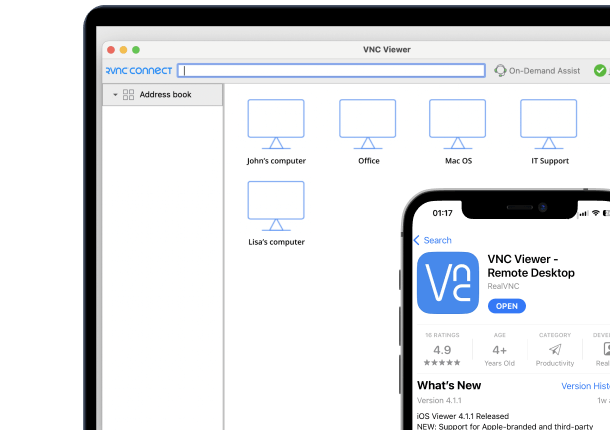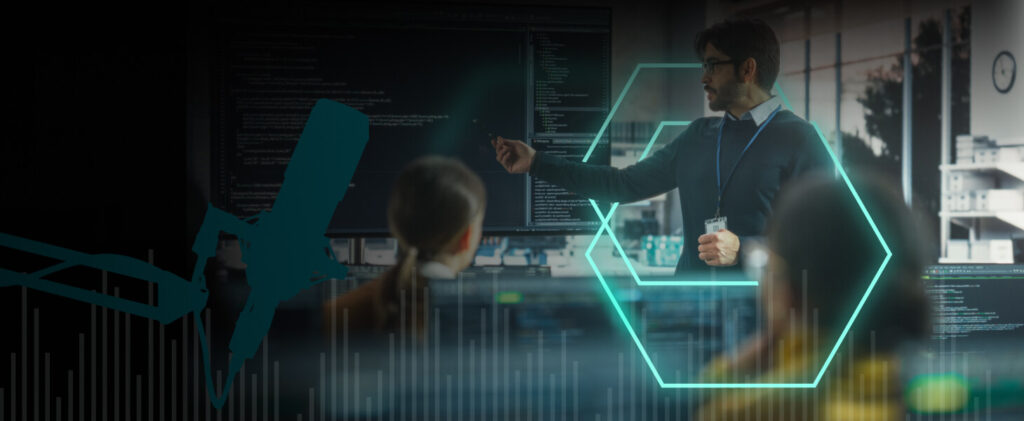The good news? Most remote desktop problems have clear solutions, once you understand their causes. By addressing these challenges head-on, you can keep your systems running smoothly and make sure your team stays productive. So, in this article, we’ll break down the most common issues and how to tackle them effectively.
Understanding Remote Desktop Connections
Remote desktop connections allow you to control a computer from anywhere as if you were sitting in front of it. This process works by transmitting your screen, keyboard, and mouse data over a network, so you can access files, run programs, or resolve issues remotely.
At a basic level, it involves three key components:
- Your device (the remote desktop client)
- The computer you’re connecting to (the host computer)
- The network connectivity linking them and establishing remote connections
Remote Desktop Connection Types
There are several ways to establish secure remote access, such as:
- RDP (Remote Desktop Protocol) – A Microsoft technology that lets users control a remote computer through a graphical interface using Port 3389 to create the RDP connection.
- VPN (Virtual Private Network) – Encrypts connections to simulate on-site network access, usually used by remote employees.
- VNC (Virtual Network Computing) – Cross-platform technology for screen sharing and input control.
- Cloud Virtual Desktops – Services like Amazon WorkSpaces and Azure Virtual Desktop provide cloud-hosted desktops accessible from anywhere.
- Remote Access Software – Tools such as RealVNC Connect combine flexibility and security with features like file sharing, multi-platform support, and compliance with standards like ISO/IEC 27001.
- SSH (Secure Shell) – Common for server access, SSH provides secure command-line management, especially in Linux environments.
- ZTNA (Zero Trust Network Access) – A modern approach requiring strict identity verification, minimizing unauthorized access risks.
Security features like encryption and authentication are essential for protecting data during all remote desktop sessions. Unlike cloud computing, which stores data externally, remote desktop services provide direct access to your infrastructure, so that control stays in your hands.
Common Remote Desktop Issues and Solutions
Remote desktop issues are diverse and complex. Let’s explore the most common ones and their top solutions below.
1. Connection Failures
Connection failures are a common frustration with remote desktop setups, often caused by network issues, firewall blockages, or incorrect credentials.
- Start by checking if the Remote Desktop Services are running on the host machine in the Services app and restart the service if needed. You can also use the command prompt window to confirm that essential services are active and correctly configured.
- Next, review firewall settings on both the local computer and the server. Check if remote desktop traffic is allowed. For RDP, this typically means allowing traffic through port 3389. For tools like RealVNC Connect, outbound connections are used, which eliminates the need for port forwarding altogether.
- You can also verify if remote connections are allowed in the remote settings under This PC’s properties. Network configuration is another critical factor, so confirm valid IP addresses, DNS settings, and that both devices are on the same network. If your network failure stems from a DNS misconfiguration, try using the terminal server tools to test resolution paths.
PS: Be aware that public networks, such as in airports or hotels, often block remote desktop traffic, which can require alternative solutions like RealVNC Connect’s cloud-based architecture.
2. Slow Performance
Slow performance during a remote desktop session can be frustrating. Common culprits include high network latency, visual features consuming excess bandwidth, or an underperforming host computer. Public networks or shared connections can amplify these issues, which can impact session quality. Large file transfers or background applications can further degrade speed.
To optimize, disable unnecessary visual features like desktop backgrounds and animations in the remote desktop client settings. Make sure your network supports high throughput and low latency. Use diagnostic tools such as a command prompt to ping the host computer or measure packet loss. Do so by opting for wired connections over Wi-Fi whenever possible.
If multiple users share a connection, prioritize remote desktop traffic using Quality of Service (QoS) settings. Keep the host machine and local computer updated with the latest operating system updates to prevent background processes from slowing the session.
Lastly, opt for a solution that mitigates these challenges with adaptive streaming, adjusting performance based on real-time network conditions. In our experience, RealVNC’s optimized architecture ensures low-latency connections.
3. Authentication Problems
Authentication issues, like “unable to connect” errors, usually arise from:
- Expired passwords
- Incorrect user credentials
- Misconfigured credential security support provider settings
Therefore, start by verifying the administrative account or user login details on both the local computer and the target machine. Make sure that authentication protocols are compatible across devices. For example, older RDP clients may not support modern security requirements, which can cause connection failures. If the issue persists, check the Group Policy Object Editor for blocked authentication methods or outdated protocol configurations.
4. Black Screen After Connection
A black screen during a remote desktop session may be the cause of display driver conflicts, incorrect resolution settings, or hardware limitations on the target PC.
First, check the computer configuration on the host machine. Update display drivers using the device manager and confirm the session resolution matches the target machine’s capabilities. Disable GPU hardware acceleration under display settings, as this is a common cause of black screens during remote sessions.
If using RDP, verify that the session is not being blocked by group policy restrictions on display features. If issues persist, disabling advanced visual features like bitmap caching in the RDP client can resolve the problem.
With a solution that optimizes each remote desktop connection using adaptive display technology, which automatically matches your remote PC connection with available hardware, you can eliminate the need for manual adjustments.
5. Audio Not Working
Audio issues during a remote desktop session are usually tied to misconfigured sound settings or driver mismatches. You may experience no sound output from the target PC or the inability to hear system alerts.
To resolve this, navigate to the remote computer’s sound settings and confirm that “remote audio playback” is turned on in the settings of all remote desktops involved.
6. File Transfer Difficulties
Sharing files during a remote desktop session can be challenging, especially when permissions or network settings are misconfigured. You might encounter failed transfers, unsupported file types, or restrictions on large files. Optimize compatibility of file transfer protocols, such as SMB for Windows or AFP for macOS, to avoid file-sharing issues.
Verify that file-sharing permissions are enabled in the remote access client and that the target device supports the required protocols. Adjust the group policy settings if necessary to ensure firewalls aren’t blocking file-sharing traffic.
7. Multi-Monitor Setup Issues
Multi-monitor setups enhance productivity but often lead to configuration challenges during remote access. Common issues with multi-monitor setups for remote server connections include incorrect display ordering or failure to recognize all monitors.
Make sure that multi-monitor support is allowed in the client’s settings and that drivers on both the local computer and remote PC are updated. Adjust display settings on the host to match the client’s configuration. Some solutions, like RealVNC Connect, can auto-detect connected monitors and adjust display settings dynamically, reducing the need for manual reconfiguration.
8. Printer Redirection Problems
Printer redirection issues, like the inability to print locally during a remote session, can cause missing drivers or misconfigured printer settings.
Make sure that printer redirection is allowed in the target PC settings. Verify that the correct printer driver is installed on both the local computer and the remote computer. Checking the control panel for active printer connections and compatibility between the driver version and the remote desktop client also helps troubleshoot such issues.
9. Security Concerns
Security is a top concern for anyone using remote desktop connections, especially when handling sensitive data or managing critical systems. Common vulnerabilities include an exposed RDP port, weak passwords, and a lack of multi-factor authentication.
To mitigate these risks, close unused ports like port 3389, implement strong password policies and turn on credential security support in the provider settings. Regularly update systems to address vulnerabilities and use tools to monitor RDP traffic for unauthorized access.
Proactivity can help safeguard your data, but your remote access solution will ultimately determine the quality of your connections’ security. RealVNC Connect takes security to the next level with end-to-end encryption, brute force protection, and compliance with standards like ISO/IEC 27001 and GDPR.
Best Practices for Preventing Remote Desktop Issues
Preventing remote desktop problems starts with proactive measures. Regular software updates and patch management are essential to secure your systems. Outdated software is an easy target for vulnerabilities, so always make sure both the host and client machines are running the latest versions.
Strong authentication measures, like multi-factor authentication (MFA) and Single Sign-On (SSO), protect access to your systems. These methods reduce the risk of unauthorized connections, particularly in environments where sensitive data is accessed remotely.
Optimizing your network also plays a critical role. Use wired connections wherever possible, prioritize low-latency networks, and configure firewalls to allow necessary traffic without compromising security.
Equally important is user training. Educating your team on recognizing potential risks and following proper protocols definitely helps reduce human error.
Naturally, the remote desktop solution you choose makes all the difference. In our day-to-day work, we use RealVNC Connect’s built-in tools like end-to-end encryption, MFA, and centralized management, for secure, optimized remote desktop experiences that keep your business running smoothly.
Future Trends in Remote Desktop Technology
Remote desktop technology solves long-standing issues like lag, security, and cross-platform compatibility. AI is playing a big role here by automatically optimizing connections based on bandwidth and network conditions.
On the security front, security is also leaping forward. Zero-trust models are now the gold standard, granting access based on who you are and the health of your device, not just where you’re connecting from.
And it doesn’t stop there. Today’s tools are built to work flawlessly across all platforms (think Windows, macOS, Linux, and even mobile). Combine that with 5G’s promise of ultra-low latency, and remote desktops will soon feel just like sitting at your own desk.
At RealVNC, we’re taking part in shaping this future. With adaptive streaming, top-tier encryption, and cross-platform flexibility, we’re making remote access faster, safer, and more reliable for businesses everywhere.
Simplify Remote Desktop Access with RealVNC
Mastering remote desktop challenges doesn’t have to be complicated. With the right strategies, like optimizing your network, strengthening security, and training your team, you can create a frictionless experience for your users.
RealVNC Connect makes implementing these best practices effortless. From adaptive streaming to end-to-end encryption and multi-platform compatibility, it’s designed to handle the toughest remote desktop challenges. Give it a try, for free. Whenever you’re ready.






